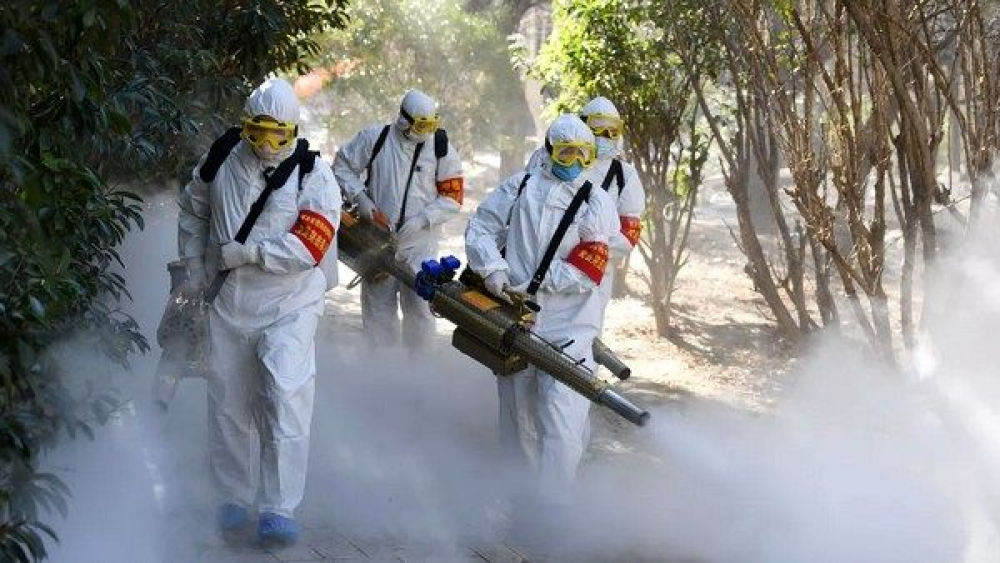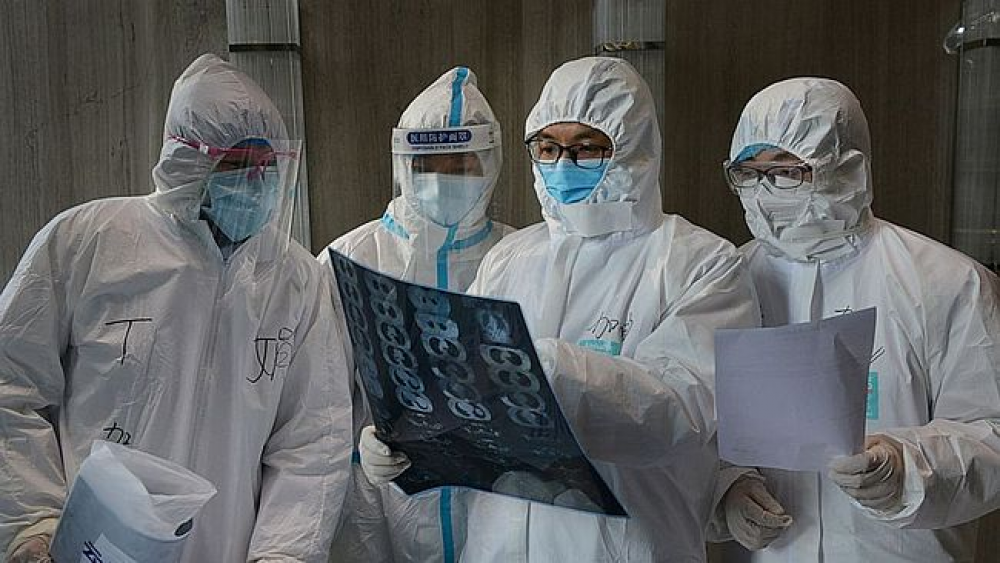Attention! Coronavirus COVID-19

We warn the elderly and people with immune system problems about the increased health risk of the COVID-19 coronavirus. We decided to share information from the Ministry of Health about the similarities between COVID-19 and influenza viruses so that you can recognize them.
First, COVID-19 and influenza viruses have a similar clinical picture of the disease. That is, they both cause respiratory illness, which is a wide range of illnesses from asymptomatic or mild to severe illness and death.
Second, both viruses are transmitted by contact, droplets and fomites. As a result, the same public health measures, such as hand hygiene and following respiratory etiquette (coughing into your elbow or into a disposable tissue), are important actions that can all prevent infection.
What is the difference between COVID-19 and influenza viruses?
The speed of transmission is an important difference between the two viruses. Influenza has a shorter average incubation period (time from infection to symptoms) and a shorter serial interval (time between consecutive cases) than COVID-19. The consecutive interval for the COVID-19 virus is estimated at 5-6 days, while the consecutive interval for the influenza virus is 3 days. This means that influenza can spread faster than COVID-19.
In addition, transmission in the first 3-5 days of illness or potentially presymptomatic transmission - transmission of the virus before symptoms appear - is the main cause of influenza transmission. Although we have evidence of SARS-CoV-2 virus spreading 24-48 hours before symptoms appear, this is not currently the main cause of transmission.
The reproductive number Ro - the number of people that can be infected by one infected person - for SARS-CoV-2 is estimated to be between 2 and 2.5, which is higher than for influenza. However, estimates for both SARS-CoV-2 and influenza viruses are highly contextual and time-specific, making direct comparisons difficult.
Children are an important factor in the transmission of influenza viruses in society. For the SARS-CoV-2 virus, initial data show that children are less affected than adults and that the incidence of cases in the 0-19 age group is low.
Additional preliminary data from households in China indicate that children are being infected by adults, not the other way around.
While the spectrum of symptoms is the same for the two viruses, the proportion with severe illness seems to be different.
For COVID-19, data to date suggests that 80% of infections are mild or asymptomatic, 15% are severe infections requiring oxygen therapy, and 5% are critical cases requiring mechanical ventilation. These severe and critical cases of infection are more serious than those observed for influenza.
Those most at risk of severe influenza infection are children, pregnant women, the elderly, people with chronic illnesses, and people with immunodeficiency. For COVID-19, current research shows that older age and existing comorbidities increase the risk of severe infection.
Mortality from SARS-CoV-2 is higher than from influenza, especially seasonal influenza. Although it will take some time to fully understand the true mortality from COVID-19, the data we have indicate that the mortality rate (number of reported deaths divided by reported cases) is 3-4%, and the infection rate (number of reported deaths divided by number of infections) will be lower. For seasonal influenza, the mortality rate is usually well below 0.1%. However, mortality is largely determined by the availability and level of medical care.
What treatments are available for COVID-19 and influenza viruses?
Although a number of drugs are currently in clinical trials in China and more than 20 vaccines are being developed for COVID-19, there are currently no licensed vaccines or therapeutics for COVID-19. In contrast, antiviral drugs and vaccines are available for influenza. Although the influenza vaccine is not effective against the COVID-19 virus, it is recommended to get vaccinated every year to prevent influenza infection.
Throughout Ukraine, drills (simulation exercises) continue in designated medical facilities in case of coronavirus cases.
Ukraine is ready to receive and treat patients with COVID-19. We have infectious disease boxes, about 12,000 beds in infectious disease hospitals, 2,000 infectious disease doctors and 5,000 other healthcare workers working in infectious disease hospitals and infectious disease boxes.
According to the Ministry of Foreign Affairs of Ukraine, as of February 28, the Embassy has not received any information about the presence of Ukrainian citizens among those infected with the coronavirus in China. The Embassy continues to be in constant contact with Ukrainians who refused to be evacuated. In total, the diplomatic mission is aware of 39 Ukrainian citizens who remain in Hubei Province.
The Ministry of Foreign Affairs has issued updated recommendations for Ukrainian citizens to temporarily refrain from traveling to Hubei Province and Wuhan, as well as to postpone their travels that are not absolutely necessary to other territories of the People's Republic of China.
In Italy, a Ukrainian citizen who arrived from Cremona was diagnosed with COVID-19. She is currently in the Cotugno Hospital (Naples), and according to doctors, her life is not in danger. The relatives with whom the citizen was in contact were placed in quarantine. This situation is under special control of the Consulate General of Ukraine in Naples and the Embassy of Ukraine in Italy.
The Italian side notes that today the government is in full control of the epidemiological situation in the country, where there are two foci of the disease in Lombardy and Veneto, while in other regions there are isolated cases that do not pose a massive threat to residents.
On February 27, the disembarkation of passengers from the Diamond Princess cruise ship, which carried 25 Ukrainian citizens on board, began. After disembarking, all of them will undergo a two-week quarantine, after which, subject to repeated negative test results, they will be able to travel outside Japan. As of February 28, three Ukrainian citizens diagnosed with the COVID-19 virus continue to be treated in medical facilities in Tokyo. Currently, the condition of our compatriots is satisfactory. On February 27, a Ukrainian citizen was discharged from the hospital, having already completed the necessary course of treatment, and is currently staying at a local hotel.
On February 28, drills in case of coronavirus were launched across Ukraine in designated medical facilities. Drills have already been held in Kyiv at Oleksandrivska Hospital and in Lutsk. They were attended by doctors, rescuers, police and local authorities.
The medical system is fully prepared in case the coronavirus is fixed. Ukraine has about 12,000 beds in infectious disease hospitals, 2,000 infectious disease doctors and 5,000 other healthcare workers working in infectious disease hospitals and infectious disease boxes.
On February 28, the Public Health Center of the Ministry of Health of Ukraine received 2 reports of suspected COVID-19 from Ivano-Frankivsk and Kirovohrad regions. In both cases, the individuals returned from Italy and have symptoms of acute respiratory illness. The preliminary results of the PCR test of the material collected from the sick people, conducted in the virological laboratories of the regional laboratory centers, were negative for influenza viruses. Samples for further testing were sent to the virological reference laboratory.
The Public Health Center of the Ministry of Health of Ukraine, with the support of WHO, has organized and is conducting a two-day training for epidemiologists and virologists on how to prepare for and respond to the COVID-19 outbreak.
The training is focused, firstly, on providing full information about the new coronavirus, as well as the latest WHO recommendations. Secondly, it is aimed at disseminating practical information as algorithms of actions for epidemiologists and virologists working in laboratories when dealing with a case that meets the definition of COVID-19.
In addition, the training includes a session on communication on how to work with information during a crisis situation such as the COVID-19 outbreak in the world.
More than 70 epidemiologists and virologists from Kyiv and the regions of Ukraine are taking part in the training.
The CDC has issued interim recommendations for businesses and employers to respond to COVID-19:
Employees with symptoms of acute respiratory illness should notify their supervisor and stay home.
If a person with an acute respiratory illness comes to work, they should be separated from other employees and sent home immediately.
The workplace should be cleaned regularly: clean surfaces, countertops and door handles with appropriate cleaning products.
Employees should treat their hands with alcohol-based disinfectants or wash their hands with soap and water for at least 20 seconds.


